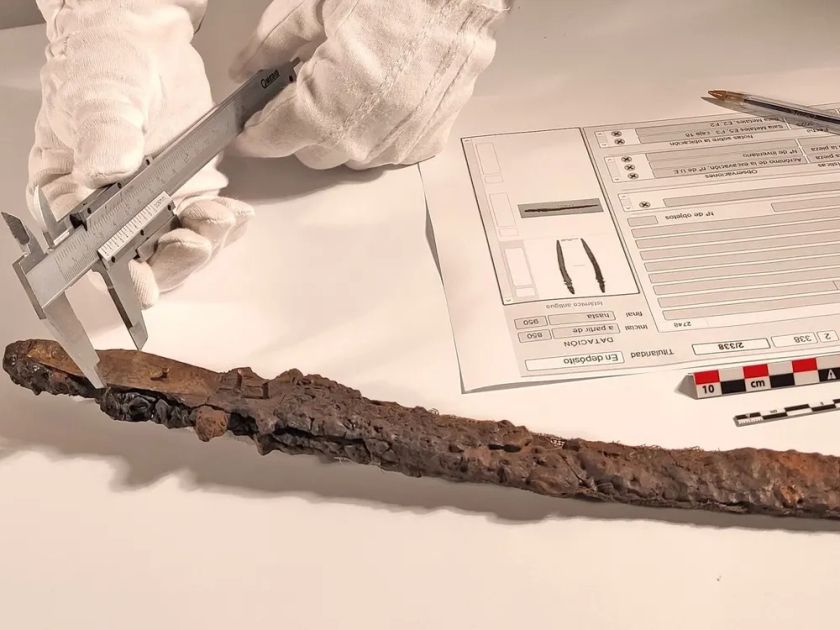Millennium-old sword restored in Spain

By Alimat Aliyeva
Recently restored in Spain, the sword turned out to be a rare artifact of the Islamic period on the Iberian Peninsula, which illustrates the multi-layered history of the conquest of the region, Azernews reports, citing foreign media.
Scientists have dated the weapon to the period when Valencia was called Balancia.
The restored iron blade was dated to the tenth century, when the Umayyad caliphate controlled the Iberian Peninsula. The sword was given the name "Excalibur". The weapon was found buried vertically, that is, it was in a position similar to the legendary sword of King Arthur encased in stone. By this analogy, it received the appropriate name.
"This sword has a unique design that gives it great archaeological value and cultural heritage value," City councilman Jose Luis Moreno said in a statement.
Archaeologist Jose Miguel Osuna conducted the new study as part of a broader review of Valencia's collection of metal objects, which covers the period from the Roman era to the late Middle Ages. The short sword, made of iron, is about 18 inches (24.72 cm) long. According to the statement, its handle is decorated with bronze plates and notches for ease of handling. The tip of the blade is slightly curved, which creates confusion in chronology, since Visigothic swords had a similar shape. The design probably reflects the evolution of earlier Visigothic models. Osuna and his colleagues confirmed the age of the artifact by analyzing the sedimentary rock layers in which it was buried.
The small size of the weapon and the absence of a guard suggest that it was used by an Andalusian horseman. Only one similar weapon was found during excavations in Spina, on the outskirts of Cordoba. Archaeological finds from this period are rare in the country, and even rarer in Valencia due to the peculiarities of the urban soil.
The Islamic era in the Iberian Peninsula was a time of "remarkable intercultural exchange between the Christian, Jewish and Muslim populations," the Metropolitan Museum of Art notes on its website. By the 900s, Cordoba had become "perhaps the greatest intellectual center in Europe," the museum adds. Muslim rule lasted until about 1492, when a long period of weakening influence ended with the conquest of Granada by Christians.
Thanks to the recent examination of the sword, Moreno says, "we have a new treasure in the form of this 'Islamic Excalibur' and the historical heritage of ancient Balancia."
---
Follow us on Twitter @AzerNewsAz
Here we are to serve you with news right now. It does not cost much, but worth your attention.
Choose to support open, independent, quality journalism and subscribe on a monthly basis.
By subscribing to our online newspaper, you can have full digital access to all news, analysis, and much more.
You can also follow AzerNEWS on Twitter @AzerNewsAz or Facebook @AzerNewsNewspaper
Thank you!
